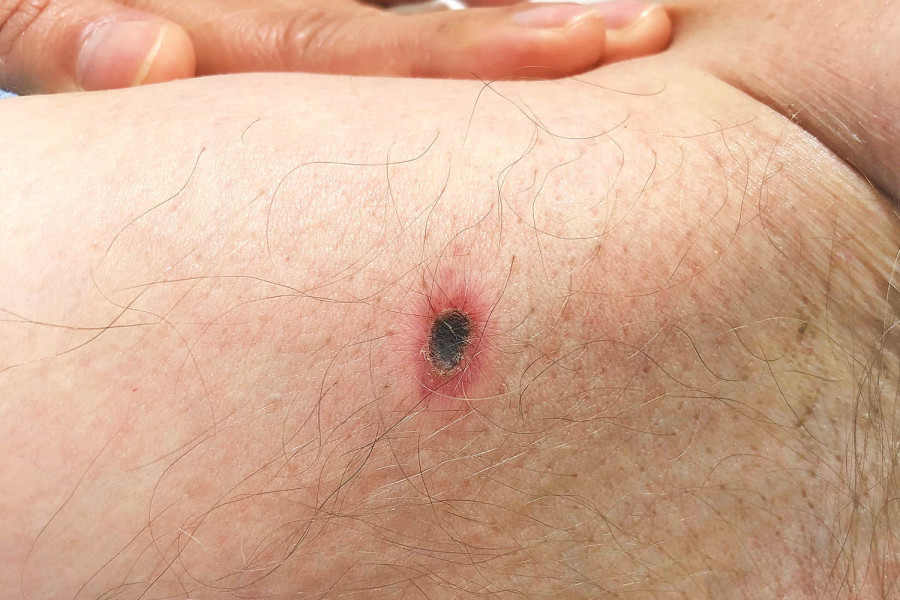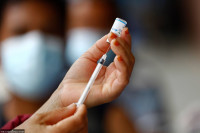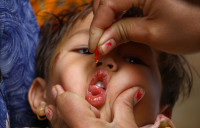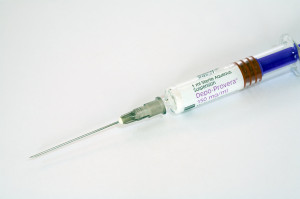Health
Scrub typhus cases spike in Kathmandu
Nearly half of patients tested positive. Some being treated in intensive care.
Arjun Poudel
Of the 23 fever patients tested at Sukraraj Tropical and Infectious Disease Hospital on Tuesday, 10 or 44 percent were diagnosed with scrub typhus.
Doctors at the hospital termed the positivity rate alarmingly high.
And what concerns them more is that a significant number of infected patients are from the Kathmandu Valley. Until a few years ago, it was believed that only those residing in rural areas or those working in grasslands or fields were at high risk.
“Positivity rate above 30 percent indicates a high transmission level, meaning there is widespread exposure to the potentially deadly disease,” said Dr Yuba Nidhi Basaula, director at the hospital. “If patients do not get timely treatment, the disease affects multiple organs and patients fall into a coma and die.
Scrub typhus, or bush typhus, is a potentially fatal infectious disease caused by the parasite Orientia tsutsugamushi, a mite-borne bacterium. It spreads to humans when bitten by infected chiggers (larval mites) found on mice.
A 12-year-old girl from Siddheshwar in ward 1 of Rainadevi Chhahara Rural Municipality, Palpa, died of scrub typhus a few days ago. The deceased was initially treated with medicines from a local pharmacy, but was later taken to the Ruru Primary Health Centre in Gulmi after her health deteriorated. The victim lost consciousness on the way and was declared dead upon arrival at the hospital.
Some patients at Sukraraj Hospital are in intensive care, while others are in general wards. Along with Sukraraj, several hospitals, including Patan Hospital and Bir Hospital, have recently reported a surge in scrub typhus cases.
“Patients from the Kathmandu Valley and referred cases visit our hospital every day,” said Dr Dilip Sharma, director Bir Hospital.
Dr Samita Panta Acharya, medical director at Patan Hospital, said five to six scrub typhus patients seek treatment daily.
“The number of scrub typhus infections has risen over the years,” said Acharya.
Scrub typhus is the second leading vector-borne disease in Nepal after dengue, which infects thousands every year and causes several deaths.
The Epidemiology and Disease Control Division reported that over 5,000 people have tested positive for scrub typhus since January.
In the fiscal year 2024-25, at least 16,597 people across the country were infected with scrub typhus. Of the total cases of infection, Lumbini province recorded 4,322 cases, the highest number in the country, followed by Sudurpaschim province (3,746 cases), Karnali (2,539), Koshi (2,119), Bagmati (1,838), Gandaki (1,725) and Madhesh province (308).
Some infected people have died, but the actual number is not known, as most health facilities lack a proper system to determine causes of death.
“People may have died from complications caused by scrub typhus, but doctors often report that patients died of multi-organ failure,” said Dr Gokarna Dahal, chief of the Vector Control Section at the division. “Due to a lack of a proper system to confirm causes of deaths, we cannot say how many deaths were caused by scrub typhus.”
The actual number may be higher, as all cases of infection do not enter government records.
Nepal saw a surge in scrub typhus cases after the 2015 earthquakes that killed nearly 9,000 persons across the country.
Three months after the quakes, the BP Koirala Institute of Health Sciences, Dharan, alerted the Epidemiology and Disease Control Division about six children with unusual fevers and severe respiratory problems.
Serum samples were collected for subsequent tests in Kathmandu and Bangkok, which confirmed a scrub typhus outbreak. By then, four children had already died in the course of treatment. By the end of the year, 101 cases were confirmed in 16 districts, and four more people succumbed to the disease.
The outbreak escalated in 2016, when 831 cases were reported in 47 districts, and 14 people died by the end of that year.
According to the Ministry of Health and Population data, 1,026 people were infected with the disease in 2020. The number increased to 1,999 in 2021, and to more than 2,900 in 2022. In 2023, over 5,000 people were infected.
Doctors say the risk of severity and fatality can be minimised if patients are diagnosed and treated early.
Common antibiotics, such as doxycycline and azithromycin, which are on the government’s essential drugs list and distributed free to health facilities across the country, can cure the disease.
However, what is concerning is that many health workers, including doctors, lack sufficient knowledge about diagnosing scrub typhus. Many health facilities also lack reagents to carry out tests for the disease.
Doctors can diagnose the disease based on the symptoms, but the risk of misdiagnosis is high, as scrub typhus symptoms are similar to those of other illnesses.
Waiting for lab results before starting treatment can be dangerous as results may take about a week, during which time patients can fall into coma and suffer multi-organ failure.
Symptoms include high fever, headache, abdominal pain, backache, joint and muscle pain, red rash, nausea and vomiting. Patients with severe illness may develop bleeding, which could lead to organ failure. Severe cases may include respiratory distress, inflammation of brain, lungs, kidney failure and multi-organ failure. If not treated immediately, the infection can be fatal, warn doctors.




 11.12°C Kathmandu
11.12°C Kathmandu














